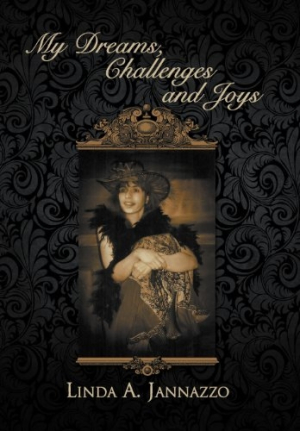My Dreams, Challenges, and Joys
“Open your arms as well as your heart and look deep inside your soul and feel your bond with your child as I do mine; conquer your fears about their future and just love them as love is the one part of us that they truly understand,” writes Linda A. Jannazzo, the mother of a special needs child. She has written My Dreams, Challenges, and Joys as a form of encouragement for parents like herself.
When her daughter Diane (“Dee”) was born, she was beautiful and appeared normal. Around age two, her development began to lag. A specialist said she was neurologically impaired. “As I sat on my porch that afternoon after the evaluation…I couldn’t understand why the sun was shining so brilliantly on a day when our lives seemed to be falling apart.” Later diagnosed as autistic, the little girl caused the family, including her younger brother, Philip, endless distress, misery, and disruption. By nature a trickster, for reasons unknown to anyone but herself, Diana would steal, hide, and sometimes ruin things that belonged to other family members. Once her father, Frank, found his new suit in the toilet. These discoveries and the chaos that they caused seemed to amuse Diana, a pretty little girl who laughed often, although only she knew the source of her amusement. She also sang, rocked, and spun, and was aggressive toward other children. Philip’s activities were often sacrificed for the needs of his sister, and though he loved and defended her, the home they called, with irony, Jannazzoland, was often a tough place to live. Diana disrupted school routine so often that she had to be placed in different classrooms and different schools.
Sometimes the family despaired of a solution, but there were bright points. After they placed Diana in a school for developmentally disabled children run by parents as well as qualified teachers, she began to improve; she was given roller skates and allowed to move from classroom to classroom, soon becoming a “social butterfly” who was well liked among her peers for her singing, smiles, and antics. Her parents made friends among the other parents, and sometimes they would call each other when a kid was having an unmanageable meltdown. Since autistic children typically have sleep disorders, the comfort calls often happened late at night.
Frank became involved with an initiative to establish a large residential home for children like Diana, and, eventually, the dream was realized. Diane flourished in this atmosphere; her verbal skills increased and she learned to take care of herself more competently. Now an adult, Diana lives in a small group facility and has a life of her own. Linda writes that, “She has become her own person. More than anyone I know, she is who she is.”
Written both as a family history and a guide for those with autistic and other special needs relations, this book will be an inspiration to those who read it, flowing as it does from amusing to frank to sad. Parents, as well as others interested in its central topics (autism, special needs children, special needs schools, and living arrangements), will find it of use. It is a short, sweet chronology of an ordinary family with extraordinary challenges, written by a caring, energetic, and determined parent.
Reviewed by
Barbara Bamberger Scott
Disclosure: This article is not an endorsement, but a review. The publisher of this book provided free copies of the book and paid a small fee to have their book reviewed by a professional reviewer. Foreword Reviews and Clarion Reviews make no guarantee that the publisher will receive a positive review. Foreword Magazine, Inc. is disclosing this in accordance with the Federal Trade Commission’s 16 CFR, Part 255.

